Student Blog

Tips to Survive Finals ⟩
December 2, 2016, by Kimmy
Life Hacks School/Life Balance
With finals week quickly approaching, stress levels have been running a little higher than usual. But as OTs, we have a few tricks up our sleeves to stay relaxed. Here’s a list of some of my stress-free strategies:
- Make a schedule. Fit in time for your work and play and rest and sleep.
- Study with friends. As long as you stay focused most of the time, collaborating with classmates is a great way to review for finals. Explaining the material to someone else will help you remember it more than simply reading the facts by yourself. A few momentary distractions make the process more fun anyway. 😊
- Don’t forget about exercise! Taking a study break to fit in a workout video or a quick jog can. You can even stay in shape without leaving your desk.
- Light a scented candle to create the perfect study environment. Or splurge for some essential oils for the ultimate aromatherapy experience.
- Treat yourself with a hot cup of tea (or coffee, if you need that caffeine fix). It will get you excited about the cozy relaxation awaiting you over winter break.
- Change up your study spot. Escape the walls of your room and try out a hidden café or tranquil library.
- Call home. Sometimes, I just need to talk to Mom or Dad. Talk to that person who helps you stay calm, gives you a reason to laugh, and boosts your confidence no matter what chaos you may be facing.

Happy holidays!
⋯

Goodbye Level I Fieldwork! ⟩
November 28, 2016, by Jessica
Two weeks ago was my last day of fieldwork, and it was definitely bittersweet. I truly enjoyed my experience this past semester at College View School, a specialized school for children with severe disabilities within Glendale Unified School District. Even though I was a special education teacher before coming to OT school, I had never worked with children with severe physical and cognitive disabilities, so this was an amazing learning experience for me. My clinical instructor was very knowledgeable and very supportive, which helped me grow in my own clinical reasoning skills and interpersonal skills. What impressed me most about this site is how well-resourced this school was — they had a beautiful facility with spacious classrooms, accessible playground equipment, a wheelchair accessible indoor heated pool, and a therapy gym. It was great to see that this school district really invested in making this school great for their kids with the highest needs, which is something that is not always prioritized in other school districts.
I was also impressed by how the school really wanted to give the kids the same experiences that other kids in general education campuses get. They had “student of the month” assemblies, where kids from each classroom would get recognized for their growth and progress in front of the whole school and their families. You could see the pride in their parents’ faces, beaming smiles and endlessly snapping photos of their child on stage. They also had themed dress up days, i.e. ’80s day, Hawaiian day, where the kids and teachers would get decked out and compete to win a trophy and bragging rights. Those are just a few of the awesome things that happened at College View in my short time there, and I’m grateful to have had the opportunity to meet and work with all of the wonderful children and staff.

College View School, Glendale, CA
⋯

Giving Thanks ⟩
November 21, 2016, by Kimmy
I love this time of year because it reminds people to reflect on everything to be thankful for, no matter how small a source of happiness may seem. Being part of a profession as rewarding as occupational therapy continuously inspires me to consider celebrating all of life’s joys. This year, USC has given me plenty of reasons to be thankful, including:
Graduation — I earned dual undergraduate degrees in occupational therapy and psychology. USC allowed me to double major, as well as pursue a minor, in my preferred areas of study.

Grad School — The Bachelor’s to Master’s program allowed me to transition seamlessly into graduate school during my undergraduate senior year, saving me time and tuition while pursuing my career.
Festival of Books — I always look forward to this weekend in April when my favorite college campus is taken over by my favorite occupation. In addition to basking in the endless supply of literary love, I was star struck when I walked right by astronaut Buzz Aldrin this past year!

OT students host a booth at the Festival of Books!
Olympics — Watching the Olympics becomes even more exciting when the Trojan Family is represented — and the Trojans sure represented by bringing home 21 medals.
Football — The Trojan men have been fighting on to win seven consecutive games!

Ambassadors take on gameday!
HSC — I moved to the Health Sciences Campus, making my commute extremely convenient and broadening my exposure to a new LA neighborhood.
Ambassadors — Serving as an ambassador has quickly proven to be a truly meaningful and enjoyable occupation. From helping others learn about OT to growing closer with my co-workers, I have loved every moment.

This crew makes work feel like play!
OTD — I will be pursuing the Doctorate of Occupational Therapy next year, which gives me advanced clinical education to become the best therapist I can be and an excuse to stay at USC for one more year!
I hope you also take the time to consider everything that has made you smile this year. Happy holidays, everyone!
⋯

Resources for USC students ⟩
November 18, 2016, by Erwin
Community Getting Involved Living in LA School/Life Balance
Being a Trojan has its perks. In addition to getting a top-notch degree in occupational therapy, USC also offers students unique opportunities to make their time here truly one-of-a-kind.
Some of the amazing things that USC has to offer include athletic special events, concerts, theatre, distinguished speakers, and jazz series. Personally, I try to take advantage of all of these opportunities — especially USC football.
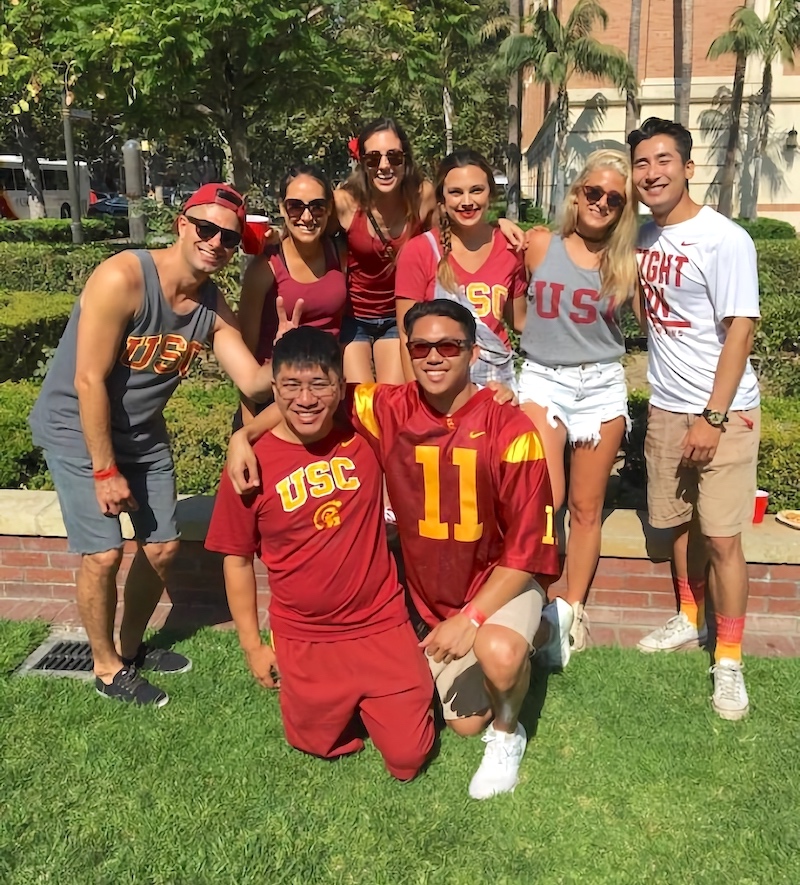
USC OTs love USC football!
USC also provides opportunities to get involved through community outreach, cultural committees, and leadership. Specifically in the division, students can get involved in various programs. Many students that live in the OT House are involved in Engage, a program that works with at-risk adolescents by giving them an opportunity to participate in diverse activities. Other division organizations include the Latino Occupational Therapy Association, Occupational Therapy and Science Council, and Student-Run Clinic.
Here’s me with the other members of the Occupational Therapy and Science Council!
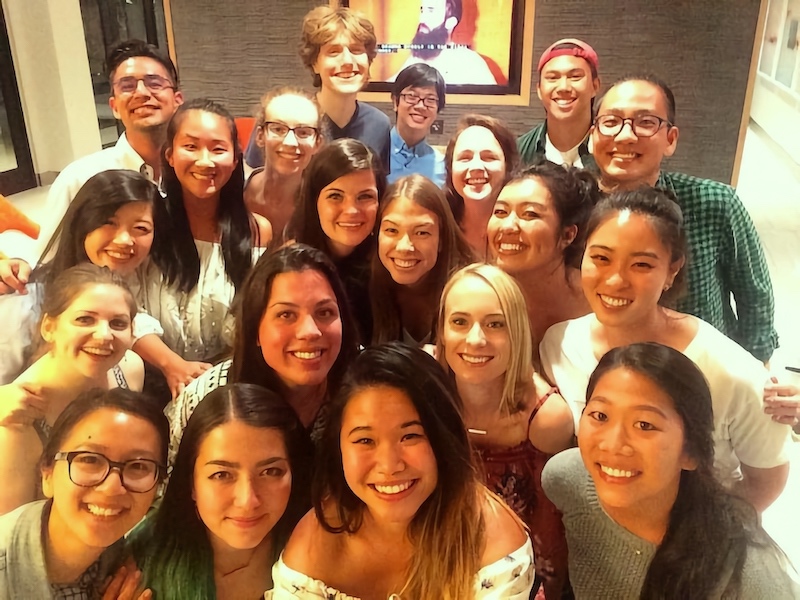
USC’s OTSC meeting/potluck!
USC is also invested in your wellness, which is awesome because that is what occupational therapy is all about! USC students have access to both the Lyon Center and Soto gyms, recreational sports, the Eric Cohen Student Health Center, and of course, USC Occupational Therapy’s own Lifestyle Redesign®.
Lastly, being a student at USC also means you have all of beautiful Southern California to your disposal. Los Angeles has a lot to offer: museums, concerts, sports, and did I mention the food?!?! My classmates and I have bonded so much in the past year and we’ve been able to go to places unique to Southern California. Not many OT students get to say they visit Disneyland, go to Lakers and Dodger games, beach trips, and explore LA on their free time.
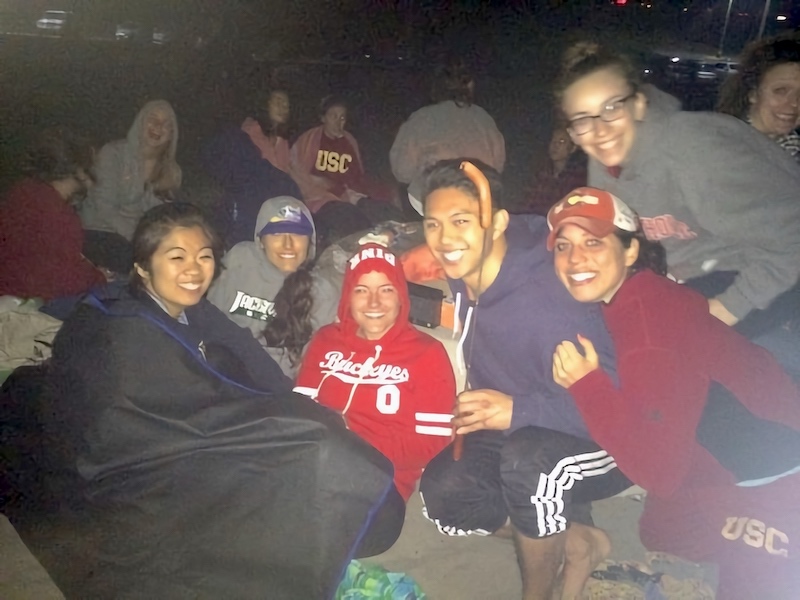
USC OTs take over Dockweiler Beach!
Here at USC, there’s always an opportunity to do the things that you find meaningful!
⋯

Visit to El Sereno Middle School! ⟩
November 17, 2016, by Alyssa
A few weeks ago, Dr. Jesús Díaz and I made a visit to El Sereno Middle School! We spent our day in Mrs. Elizabeth Buck’s science classroom. During out visit, we had the chance to meet her 7th and 8th students and talk to them about the field of occupational therapy and teach them things, such as where OTs work and who we treat. In addition, we were also able to share the value we see in pursuing college through our own college experiences here at USC! Mrs. Buck’s students were a pleasure to meet and we especially admired their respect and interest in our presentations. Specifically, we were very impressed on how well they were able to define occupational therapy after our group discussion. We appreciate the thanks and feedback they sent us and I would like to share some of these with you!
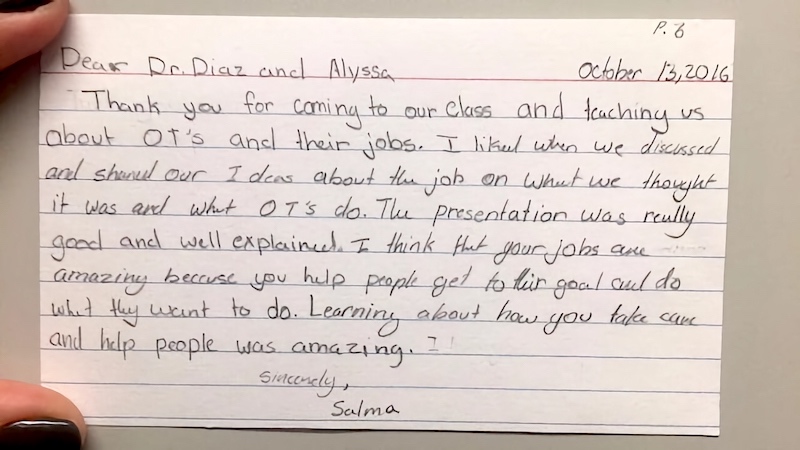
Salma
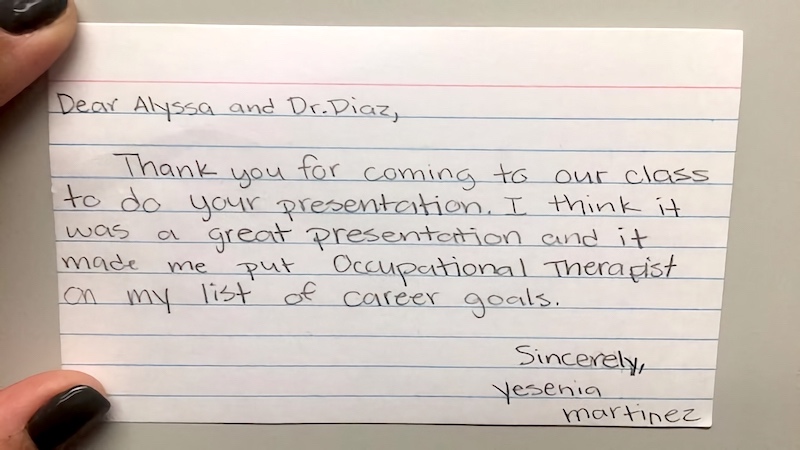
Yesenia
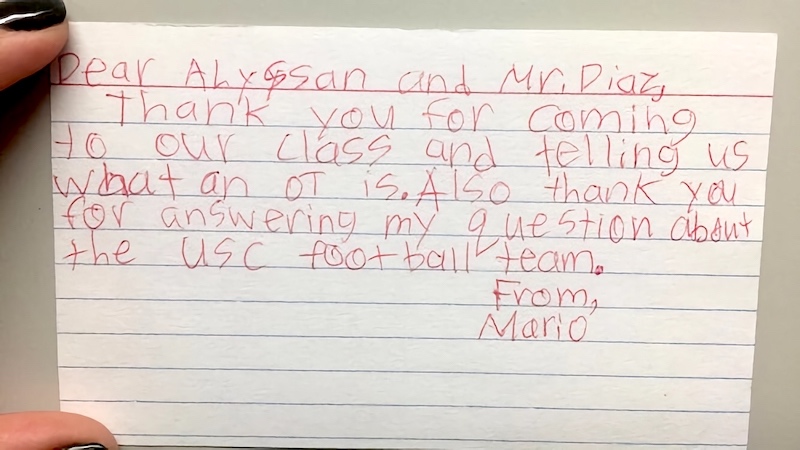
Mario
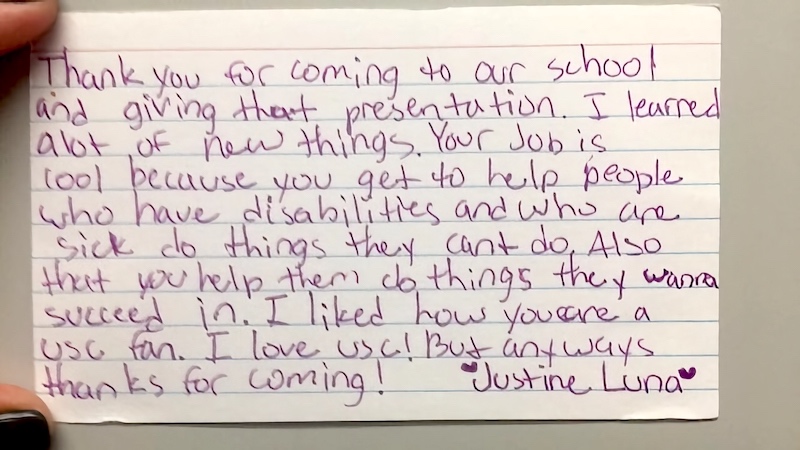
Justine
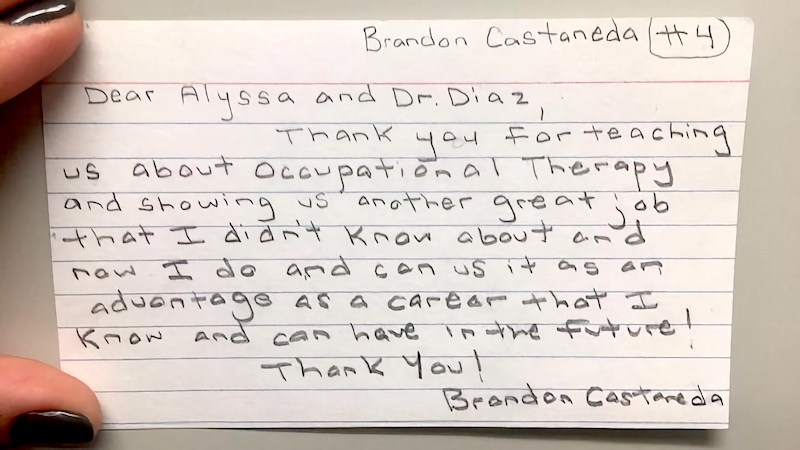
Brandon
⋯





